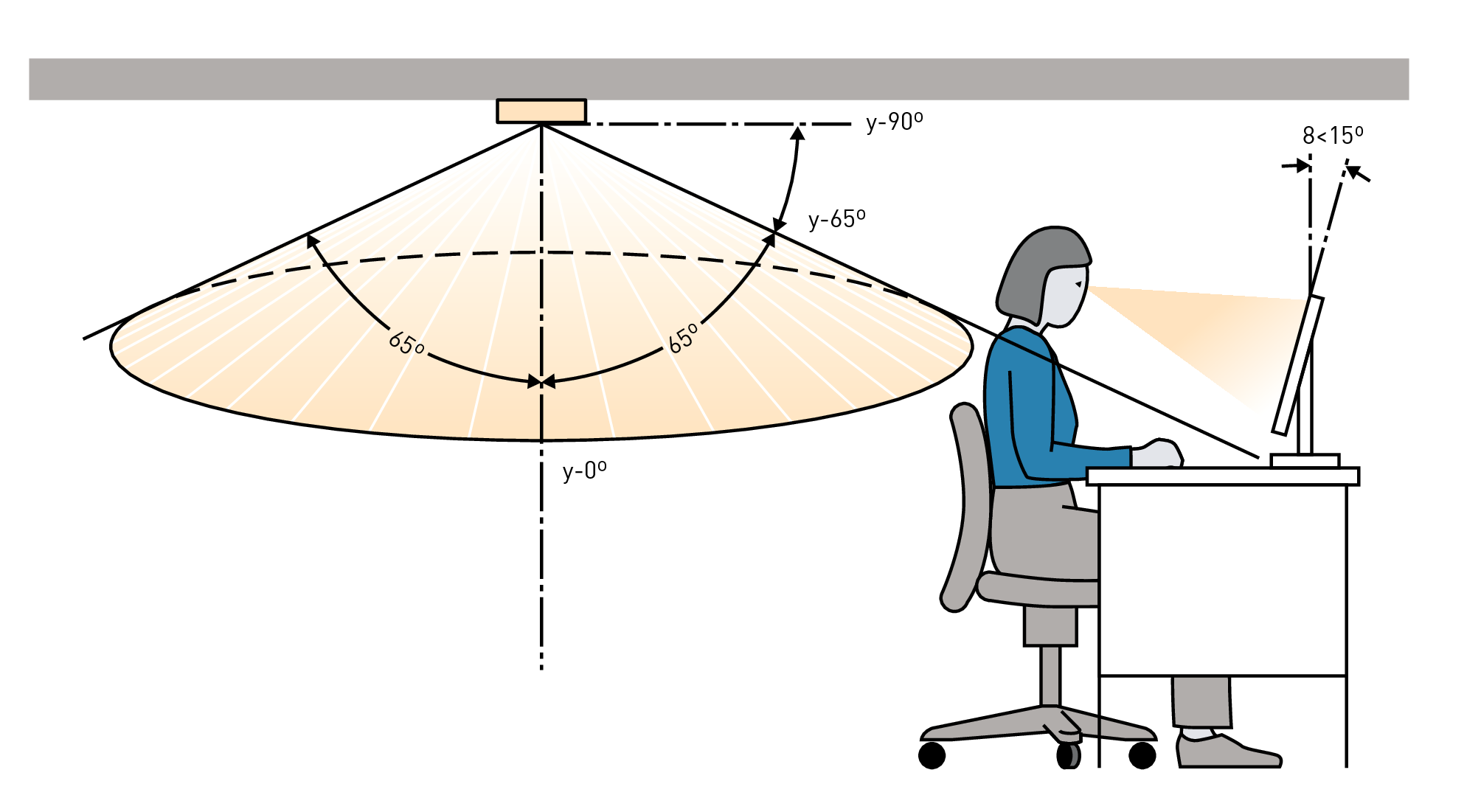
Ergonomic requirements

When designing VDU workstations, substantiated ergonomic insights are indispensable criteria for occupational health and safety as well as the avoidance of health risks and must be considered. This became mandatory through EU directive 90/270/EEC of 29 May 1990 on the minimum safety and health requirements for work with display screen equipment (fifth individual Directive within the meaning of Article 16 (1) of Directive 89/391/EEC "Safety and health of workers at work"). It defines the following in terms of lighting:
"Room lighting and/or spot lighting ("work lamps") shall ensure satisfactory lighting conditions and an appropriate contrast between the screen and the background environment, taking into account the type of work and the user's vision requirements.
Possible disturbing glare and reflections on the screen or other equipment shall be prevented by coordinating workplace and workstation layout with the positioning and technical characteristics of the artificial light sources.
Workstations shall be so designed that sources of light, such as windows and other openings, transparent or translucid walls, and brightly coloured fixtures or walls cause no direct glare and, as far as possible, no reflections on the screen.
Windows shall be fitted with a suitable system of adjustable covering to attenuate the daylight that falls on the workstation."

Figure 3.90: Geometry at a VDU workstation in relation to avoiding disturbing reflections by luminaires
A relaxed posture, particularly of the head, is a necessary requirement for fatigue-free work. Ergonomic requirements for office work with screens are specified in the EN ISO 9241 standard series "Ergonomics of human-computer interaction", which has been adopted by many European countries as a national standard.
Due to the visual strain associated with screen work, VDU workstations are subject to elevated ergonomic and lighting requirements. A slight inclination of the head towards the front and a viewing direction ca. 15° below the horizontal have proven to be beneficial. The screen should be tilted ca. 15° from the vertical.
This geometry is the basis of the shielding conditions (shielding angle) for high-luminance surfaces specified in EN 12464-1 to avoid disturbing reflections as defined by the EU directive. According to EN 12464-1, the luminance of luminaires must be limited to certain values starting at the limiting distribution angle of 65° (see section "Luminance thresholds"). Combined with a screen inclination of up to 15°, this means disturbing reflections on the screen cannot occur. Due to the free assignment of VDU workstations and luminaires, maximum luminance values apply to all distribution ranges above a distribution cone with the opening angle of ± 65°, meaning all around the luminaire (see fig.).